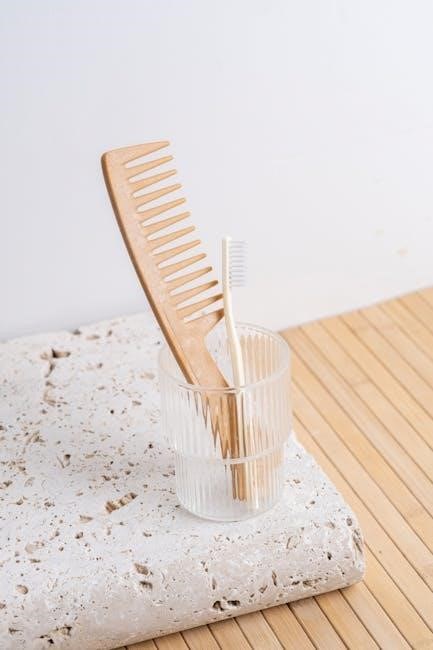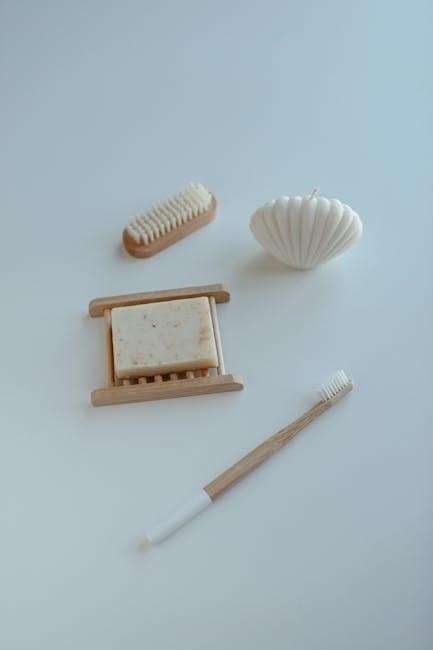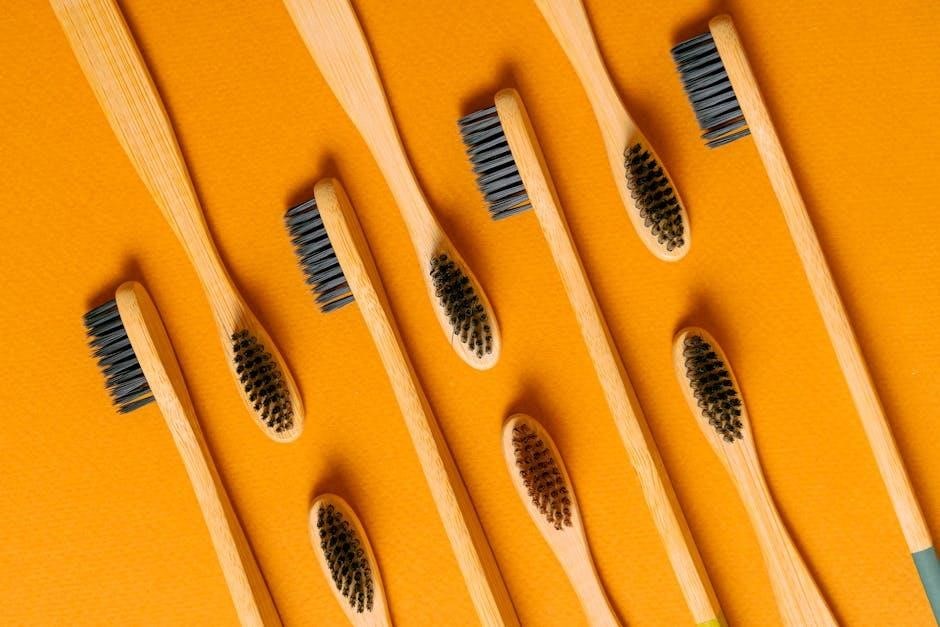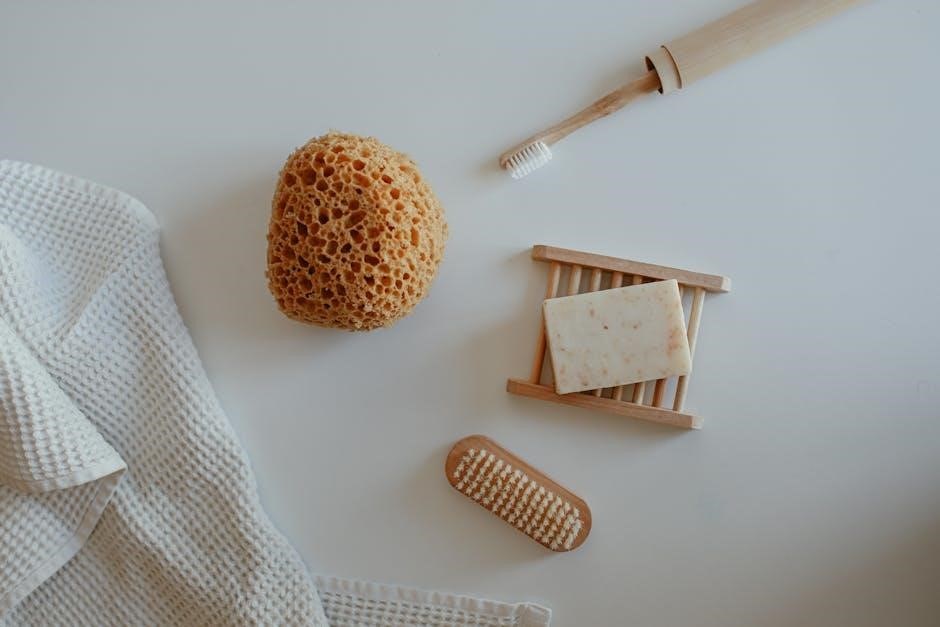Choosing the right toothbrush texture is essential for effective oral hygiene. Soft bristles are generally recommended as they clean effectively without damaging gums or enamel. This article guides you in selecting the ideal manual toothbrush texture for optimal oral health.

Importance of Toothbrush Texture
The texture of a manual toothbrush plays a crucial role in maintaining oral health. Soft bristles are generally recommended as they effectively remove plaque and bacteria without causing damage to gums or tooth enamel. Hard or medium bristles can lead to gum recession and enamel wear over time, especially for those who brush aggressively. Conversely, soft bristles are gentle on sensitive teeth and gums, making them ideal for most individuals. The texture also influences brushing comfort and effectiveness, with soft bristles being less likely to cause discomfort or bleeding. Dentists emphasize that using a toothbrush with the right texture is vital for preventing oral health issues while ensuring a thorough cleaning. By selecting a toothbrush with an appropriate texture, individuals can maintain healthy gums, prevent enamel damage, and achieve optimal oral hygiene.

Recommended Bristle Texture
Soft bristles are the recommended texture for a manual toothbrush, as they effectively clean while protecting gums and enamel. Medium bristles are occasionally effective but may cause mild gum irritation, while hard bristles are discouraged due to potential enamel and gum damage.
Soft Bristles
Soft-bristled toothbrushes are the most recommended choice for maintaining oral health. They are gentle on gums and tooth enamel, making them ideal for individuals with sensitive teeth or gums. Dentists emphasize that soft bristles effectively remove plaque and bacteria without causing irritation or damage. This texture is particularly beneficial for people who brush too hard, as it reduces the risk of enamel wear and gum recession. Additionally, soft bristles are suitable for those with orthodontic work or dental restorations. The Canadian Dental Association (CDA) and other dental organizations consistently endorse soft-bristled toothbrushes for their safety and effectiveness. For optimal results, soft-bristled toothbrushes should be used with a gentle brushing technique and replaced every three months.
Medium Bristles
Medium-bristled toothbrushes are often considered a middle ground between soft and hard bristles. They offer slightly more cleaning power than soft bristles, making them effective for removing plaque and surface stains. However, dental professionals caution that medium bristles can be too abrasive for sensitive gums or enamel, especially if used with heavy pressure. Studies suggest that medium bristles may be more effective at plaque removal than soft bristles, but they also carry a higher risk of gum recession and enamel wear if not used gently. For individuals who prefer a firmer texture, medium bristles can be a suitable option, but they are not universally recommended. Heavy brushers, in particular, are advised to avoid medium bristles to prevent potential damage. Despite this, medium-bristled toothbrushes remain popular for their balance of cleaning efficacy and texture.
Hard Bristles
Hard-bristled toothbrushes are generally not recommended for most individuals due to their abrasive nature. The stiff bristles can cause gum recession, enamel wear, and damage to sensitive gum tissue over time. While some people believe harder bristles clean more effectively, this is a misconception. In reality, hard bristles are more likely to harm oral health, especially when used with heavy brushing pressure. Dentists strongly advise against using hard-bristled toothbrushes for regular oral care, as they can lead to long-term dental issues. For those with sensitive gums or a history of gum disease, hard bristles are particularly risky. Instead, soft or medium bristles are preferred for their balance of cleaning power and gentleness. Hard-bristled toothbrushes are better suited for specific, heavy-duty cleaning tasks rather than daily use.

Head Size and Shape
A small to medium-sized toothbrush head is ideal for effective cleaning. It allows better access to all mouth areas, ensuring thorough plaque removal without causing discomfort or damage.
Small to Medium Head
A small to medium-sized toothbrush head is highly recommended for effective oral care. Its compact size allows for better maneuverability, enabling precise cleaning in hard-to-reach areas, such as the back molars and between tightly spaced teeth. This design ensures that plaque and food particles are removed efficiently without causing discomfort or irritation. Additionally, a smaller head is less likely to cause gum recession or enamel wear, making it a safer choice for long-term use. Many dental professionals emphasize that a smaller head promotes proper brushing technique, encouraging users to clean at the recommended 45-degree angle against the gum line. This size is also ideal for individuals with smaller mouths or orthodontic appliances, providing a more comfortable and effective brushing experience. Overall, a small to medium head strikes the perfect balance between thorough cleaning and gentle care.
Special Features
Modern manual toothbrushes often include special features that enhance oral hygiene. For instance, some brushes have a dimpled rubber texture on the back of the head, designed for gentle tongue cleaning and fresh breath. Others may feature ergonomic handles made from eco-friendly materials, reducing waste and promoting sustainability. Additionally, certain toothbrushes offer interchangeable heads, allowing users to customize their brushing experience while minimizing environmental impact. These innovations not only improve cleaning efficiency but also cater to individual preferences, ensuring a more comfortable and effective brushing routine. By incorporating such features, manual toothbrushes can meet a wide range of needs, from sensitive teeth to eco-conscious lifestyles, making them a versatile choice for maintaining optimal oral health.

Bristle Design
Angled and zig-zag bristles are designed to enhance plaque removal efficiency, making them a popular choice for effective cleaning. These designs improve access to hard-to-reach areas, promoting better oral hygiene.

Angled and Zig-Zag Bristles
Angled and zig-zag bristle designs are engineered to improve plaque removal and access hard-to-reach areas. These unique patterns allow for better coverage, especially around the back molars and gumlines. Studies suggest that angled bristles can effectively remove plaque compared to flat designs, making them a popular choice for enhanced cleaning. Additionally, zig-zag bristles create a dynamic cleaning motion, which helps dislodge food particles and bacteria more efficiently. Dentists often recommend these designs for their ability to promote thorough oral hygiene without compromising comfort. For instance, toothbrushes like the Oral-B Pro-Expert All-In-One feature extra-long angled bristles for superior cleaning. These designs are particularly beneficial for individuals seeking a manual toothbrush that combines effectiveness with gentle care, ensuring a cleaner smile with minimal effort.

Special Considerations
For sensitive teeth and gums, soft-bristled toothbrushes are ideal to avoid irritation. Heavy brushers benefit from wide, massaging heads that distribute pressure evenly, preventing enamel and gum damage.
Sensitive Teeth and Gums
For individuals with sensitive teeth and gums, a soft-bristled toothbrush is highly recommended. Hard or medium bristles can exacerbate sensitivity, causing discomfort and potential damage. Soft bristles gently clean without irritating the gums or enamel, making them ideal for those prone to sensitivity. Dentists often advise against using medium or hard bristles, as they can lead to gum recession or tooth abrasion. Additionally, some toothbrushes feature specialized designs, such as dimpled rubber textures for tongue cleaning, which can enhance oral hygiene without causing irritation. The Canadian Dental Association emphasizes that soft-bristled toothbrushes are the safest choice for sensitive teeth and gums. By opting for a soft texture, individuals can maintain effective cleaning while protecting their oral health. This consideration is crucial for preventing further sensitivity and ensuring a comfortable brushing experience.
Heavy Brushers
Heavy brushers often face challenges with toothbrush texture, as aggressive brushing can damage gums and enamel. Soft-bristled toothbrushes are typically recommended for heavy brushers, as they reduce the risk of abrasion. Medium or hard bristles may cause gum recession or tooth wear, especially with vigorous brushing. Dentists advise heavy brushers to opt for soft bristles to minimize damage while maintaining effective plaque removal. Additionally, toothbrushes with wide, massaging heads can distribute pressure more evenly, preventing enamel and gum damage. The Radius Source toothbrush, for instance, reduces waste and offers a design that spreads forces over a larger surface area, making it ideal for heavy brushers. By choosing a soft-bristled toothbrush, heavy brushers can protect their oral health while still achieving a clean smile. This approach balances cleaning effectiveness with gentle care, catering specifically to those who brush aggressively;
Selecting the right toothbrush texture is crucial for maintaining good oral health. Soft-bristled toothbrushes are generally recommended as they effectively remove plaque without damaging gums or enamel. For heavy brushers, soft bristles help prevent abrasion and gum recession. Dentists emphasize that soft or medium textures are ideal for most individuals, balancing cleanliness and gentleness. Additionally, eco-friendly options like the Radius Source toothbrush offer sustainable solutions without compromising on quality. By choosing a toothbrush with the appropriate texture and features, individuals can ensure optimal oral hygiene and protect their teeth and gums from potential harm. This informed approach to toothbrush selection contributes significantly to long-term oral health and overall well-being.
